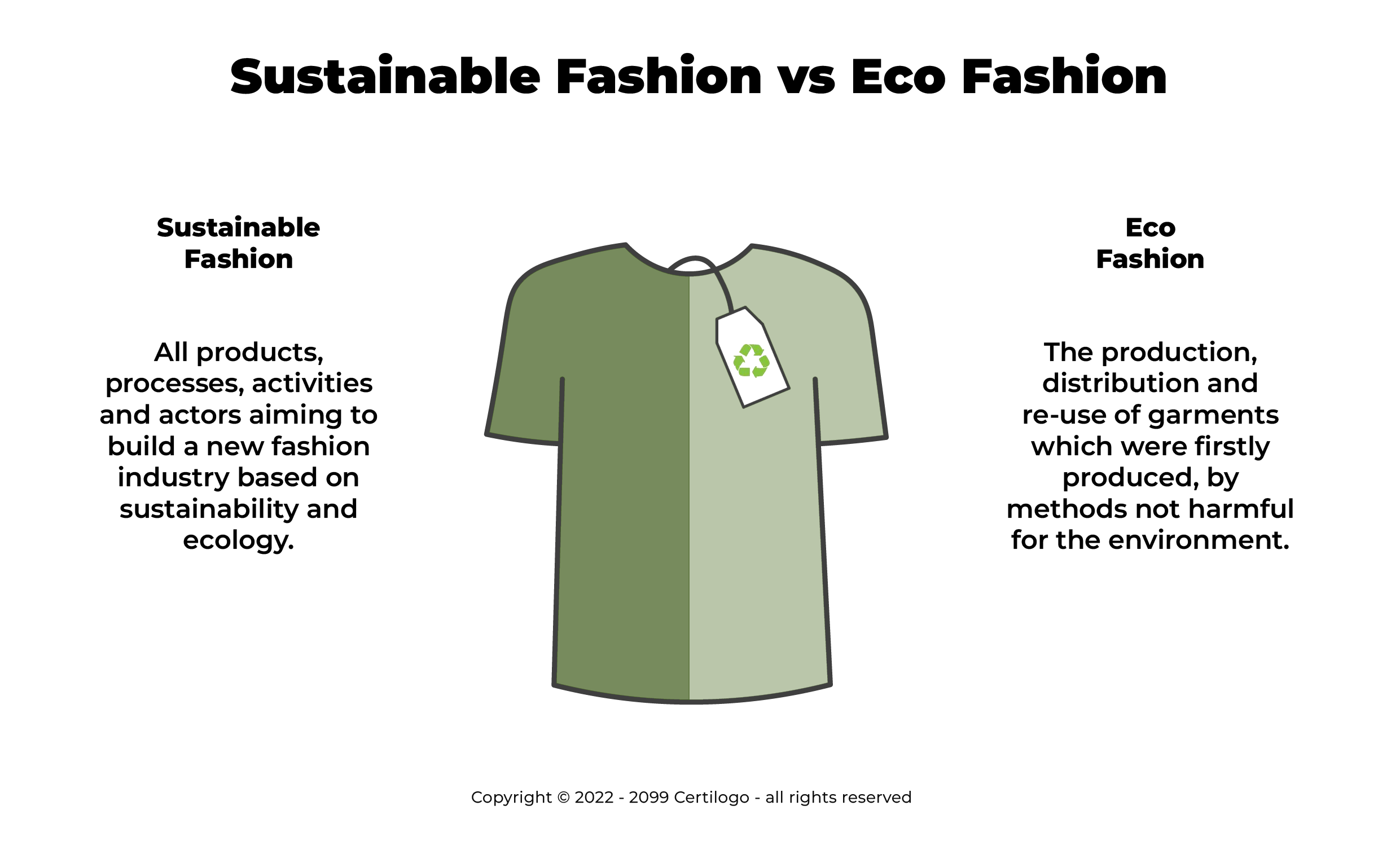The Potential Future of Cape Town Sustainable Fashion in the Global Market
The Potential Future of Cape Town Sustainable Fashion in the Global Market
Blog Article
Stay Ahead of the Contour by Exploring Ingenious Style Trends
In a market as vibrant as fashion, remaining in advance involves greater than simply following current patterns-- it requires an expedition of development. Smart fabrics, for circumstances, are changing garments right into functional masterpieces, while 3D printing is changing layout processes with its customizable, waste-reducing capacities. As sustainability ends up being a keystone, developments like eco-friendly materials and round style practices are reshaping environmental obligation - Cape Town Sustainable Fashion. In addition, the merging of innovation and fashion heralds a new age of customer engagement. Exactly how, after that, can these arising patterns redefine the future of style, and what ramifications do they hold for brand names looking for to thrive in this developing landscape?

Accepting Smart Textiles
In the last few years, the apparel industry has actually seen a transformative change with the assimilation of wise fabrics, an advanced advancement that mixes modern technology with fabric. This advancement represents not only a fusion of looks and functionality however additionally a significant leap towards sustainability and customization in style. Smart fabrics, additionally referred to as e-textiles, embed sophisticated electronic devices such as sensing units and conductive strings within the material, making it possible for garments to connect with the wearer or the environment.
These fabrics are created to check physical criteria, such as heart price or body temperature level, providing real-time health analytics. Beyond health applications, smart textiles are also being utilized for flexible apparel, which can alter color or pattern in reaction to environmental stimuli, therefore offering a dynamic fashion experience.
Moreover, the development of energy-harvesting fabrics that create power from motion or sunlight is leading the way for self-dependent wearable innovation. This development is appealing to environmentally aware consumers and developers intending to minimize the ecological impact of style. As research study and development in this field breakthrough, smart fabrics are anticipated to end up being progressively prevalent, improving the landscape of modern-day fashion with their multifunctional capabilities.
The Surge of 3D Printing
Reinventing the manufacturing landscape, 3D printing has actually become a game-changer in the apparel industry. This advanced technology has actually enabled designers to press the limits of creativity, generating elaborate and tailored garments that were previously unimaginable. By leveraging digital layout and additive manufacturing, 3D printing promotes the creation of intricate geometries and patterns, allowing developers to try out new structures and frameworks.
A noteworthy benefit of 3D printing in fashion is its capability to generate on-demand, decreasing waste and decreasing supply needs. This effectiveness not just maximizes production procedures but likewise enables rapid prototyping, allowing developers to bring their visions to life in a much shorter timeframe. Moreover, 3D printing sustains personalization to a level unrivaled by typical approaches, supplying personalized fits and distinct styles customized to specific consumer preferences.
The surge of 3D printing has likewise equalized style, making it available to emerging designers who can currently make premium items without considerable economic investment in typical manufacturing facilities. As innovation remains to breakthrough, the fashion business is positioned to harness the full capacity of 3D printing, exploring new materials and methods that will most certainly redefine just how style is conceived and created.
Sustainable Style Technologies
As the style market comes to grips with the pushing requirement for environmental responsibility, lasting fashion developments have arised at the forefront of transformative adjustment. The expanding understanding of ecological influence has fueled a change towards even more eco-conscious techniques and materials. Brand names and developers are currently prioritizing sustainability, incorporating techniques that reduce waste and reduce carbon impacts.
One significant growth is the surge of round fashion, which highlights recycling and upcycling to extend the lifecycle of garments. This strategy not only lowers waste however likewise urges consumers to take on a much more conscious method to clothing intake. Additionally, using sustainable products, such as organic cotton, hemp, and recycled polyester, has actually acquired grip. These materials need much less water and energy throughout manufacturing, substantially reducing ecological impact.
One more advancement exists in the fostering of innovative dyeing techniques that use natural dyes or waterless processes, therefore decreasing the huge quantities of water and chemicals commonly used in fabric dyeing. Furthermore, improvements in you could look here biotechnology have actually caused the production of lab-grown natural leather and textiles, using cruelty-free and eco-friendly options to traditional products. With these pioneering efforts, the fashion industry is making purposeful strides in the direction of an extra lasting future.

Tech-Integrated Clothing
Tech-integrated apparel represents a cutting-edge fusion of style and technology, reshaping just how people engage with their garments. This innovative domain is noted by the incorporation of smart textiles and ingrained electronic parts, enhancing both performance and visual allure. From physical fitness trackers installed in sports apparel to warmed coats regulated via mobile phone applications, tech-integrated garments offers consumers unprecedented comfort and versatility.
Introducing brands are driving this pattern, focusing on producing garments that react to environmental stimulations or individual commands. For instance, some garments can alter shade or pattern in reaction to temperature level changes, while others incorporate biometric sensing units to check health and wellness metrics like heart price or stress degrees. The smooth integration of innovation right into fabrics also encompasses ecological sustainability, with initiatives to develop self-cleaning materials or garments that change to weather problems, thus lessening the need for multiple layers.
Furthermore, the advent of wearable innovation is not simply restricted to garments but encompasses accessories like watches and eyeglasses, more widening the extent of tech-integrated fashion. As the sector continues to innovate, the potential for personalization and customization in clothing expands, providing consumers special, tech-enhanced style experiences that provide to their specific demands and choices.
Future of Virtual Style
In the last few years, the future of virtual fashion has emerged as a transformative pressure within the sector, leveraging advancements in digital technology to redefine how style is developed, experienced, and eaten. By incorporating enhanced truth (AR), virtual reality (VIRTUAL REALITY), and 3D design tools, developers can currently craft interactive and immersive experiences that go beyond standard fashion boundaries. Digital style enables the production of garments that exist only in digital environments, offering endless opportunities for advancement without the limitations of physical manufacturing.
This electronic shift not just provides chances for creative expression yet likewise addresses sustainability problems integral in standard style techniques. Cape Town Sustainable Fashion. By getting rid i was reading this of the demand for physical sources, virtual fashion decreases waste and minimizes carbon impacts. Moreover, the rise of online fashion straightens with the raising consumer need for distinct and personalized experiences, as digital garments can be personalized and tailored to private choices with simplicity

Verdict
The apparel industry's future lies in the assimilation of cutting-edge innovations and sustainable techniques - Cape Town Sustainable Fashion. Smart textiles and tech-integrated garments are enhancing capability, while 3D printing uses opportunities for customization and waste decrease. Sustainable style, with round techniques and environmentally friendly materials, shows a commitment to ecological stewardship. Moreover, virtual fashion is poised to redefine customer interactions. Adjusting to these patterns is vital for brand names seeking to stay relevant and affordable in this swiftly progressing landscape.
In recent years, the style sector has observed a transformative shift with the integration of wise Related Site fabrics, a cutting-edge advancement that mixes modern technology with fabric.As the fashion sector grapples with the pushing demand for ecological responsibility, sustainable fashion advancements have actually arised at the forefront of transformative modification.In recent years, the future of online fashion has emerged as a transformative force within the market, leveraging developments in electronic modern technology to redefine how style is developed, experienced, and eaten. The surge of digital style straightens with the raising consumer demand for tailored and one-of-a-kind experiences, as digital garments can be personalized and tailored to individual preferences with convenience.
The style sector's future lies in the integration of lasting practices and ingenious technologies.
Report this page